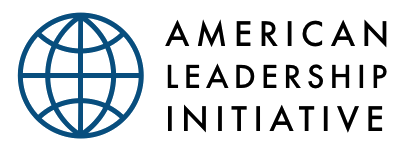Public-Private Partnerships are Key to the Administration’s New Trade Paradigm
/Author: ALI CEO Orit Frenkel. November 7, 2022.
The Biden Administration has launched a new model of bilateral economic engagement, moving away from traditional trade agreements. This is best reflected in the Indo-Pacific Economic Framework for Prosperity (IPEF) but is also seen in its Americas Partnership for Economic Prosperity, the U.S.-Taiwan 21st Century Initiative, and other programs. Partnerships between U.S. government and business will be key to the success of these innovative, new arrangements.
Unlike traditional trade agreements which have focused primarily on tariff reductions and market access, these frameworks are more holistic, focusing on systemic issues such as uplifting labor, promoting decarbonization, raising digital standards, creating resilient supply chains, and eliminating corruption.
Emphasis on these issues provides an alternate path for growth and governance in the region, demonstrating U.S. economic leadership, creating opportunities for U.S. workers, and uplifting workers and standards globally. This approach will also give countries a meaningful alternative to China’s authoritarian standards and influence, while establishing a new paradigm for U.S. trade negotiations going forward.
Since IPEF and the other new frameworks will not include tariff concessions, creative thinking is needed to structure incentives for countries to make the commitments the U.S. is seeking, many of which are politically challenging for our trading partners.
The U.S. has two impactful incentives beyond market-opening measures at its disposal -- U.S. government funding and private-sector investment.
According to the latest Greenbook, the U.S. obligated over $33 billion in economic assistance in 2019. Much of this is rightfully allocated to priority needs, such as disaster relief and poverty alleviation. At the same time, significant funding is allocated to goals these new economic frameworks seek to achieve, including regulatory reform, digitization, and clean energy transition.
While the bulk of this funding resides in the U.S. Agency for International Development (USAID), other agencies like the International Development Finance Corporation (DFC) and the Export-Import Bank (Exim) and the U.S. Trade and Development Agency (USTDA) also have significant resources, as do sector specific agencies, such as the Department of Labor, the Department of Commerce, and the Department of Energy.
Economic assistance and financing today are not typically coordinated with the Administration’s trade priorities. USMCA was an exception, with $210 million allocated to Department of Labor to assist Mexico in upgrading and implementing its labor regulations, paving the way for the labor commitments the U.S. was seeking.
Government capacity building already takes the form of drafting new regulations for labor, environmental and digital standards; technical training on how to implement green technologies or digitize customs regulations; or digital upskilling to assist entrepreneurs and small businesses in accessing markets. Feasibility studies from the USTDA, combined with financing from the DFC or Exim, can be directed towards broadband equipment, satellites or subsea cables to help countries expand access to the internet, or towards wind and solar power to support decarbonization.
The robust U.S. private sector is a second powerful tool that the U.S. should harness. Pairing U.S. government funding together with private sector investments and know-how will be especially effective. While U.S. companies are already actively investing around the world, providing training and other services, these activities are not coordinated with U.S. negotiations. Business must be active participants and part of the package that the U.S. uses in its negotiations. At the same time, government can provide market signals and assurances that are useful for the private sector to align their activities with negotiating goals.
Bringing together government funding and private sector investments to create public-private partnerships (PPPs) can form the backbone of a new trade negotiation model. Companies can partner with U.S. government capacity building efforts to provide technical assistance and training that support IPEF’s goals. Government financing can be used to catalyze private sector investment and raised standards that will in turn make these countries more attractive investment destinations. This would turbo-charge each dollar invested by pairing government funding with private sector investment and experience.
Companies already follow a wide array of extraterritorial U.S. government regulations -- ensuring that they are not using forced labor; complying with national security sanctions; and refraining from illicit payments. While U.S. companies will continue to invest based on market forces, this new paradigm provides incentives for companies to proactively invest and provide services in countries where the U.S. wants to positively engage.
Using IPEF as an example, the U.S. should launch a robust PPP initiative, by pairing U.S. government capacity-building resources with American companies and civil society. It should bring new public and private resources to the region, as well as harness ongoing U.S. government projects and business initiatives that align with IPEF’s goals under this umbrella. Such an initiative would demonstrate U.S. regional leadership, as well as incentivize member countries to advance IPEF’s goals. Countries who commit to adopt certain digital standards could be the beneficiary of U.S. capacity funding and private sector investment and skilling to help them reach that goal.
It is vital for Congress to be involved in this new paradigm. Congress should authorize additional capacity building resources to facilitate a PPP program among IPEF members and pass legislation endorsing the development and widespread promotion of this program. Congressional involvement is also critical to give assurances to countries wary of U.S. presidential capriciousness.
Such a PPP program is an important counterweight to China’s presence in the region. While the U.S. will never match China’s funding, it can help create alternative terms and standards for Indo-Pacific investment, especially as concerns grow over China’s abusive lending terms, corrosive capital, and environmental standards.
Executed well, an IPEF PPP program will expand resilient supply chains, create opportunities for U.S. businesses and workers, demonstrate U.S. leadership in Asia, and give countries an alternative to China’s standards and influence, while demonstrating a new paradigm for U.S. trade negotiations.



